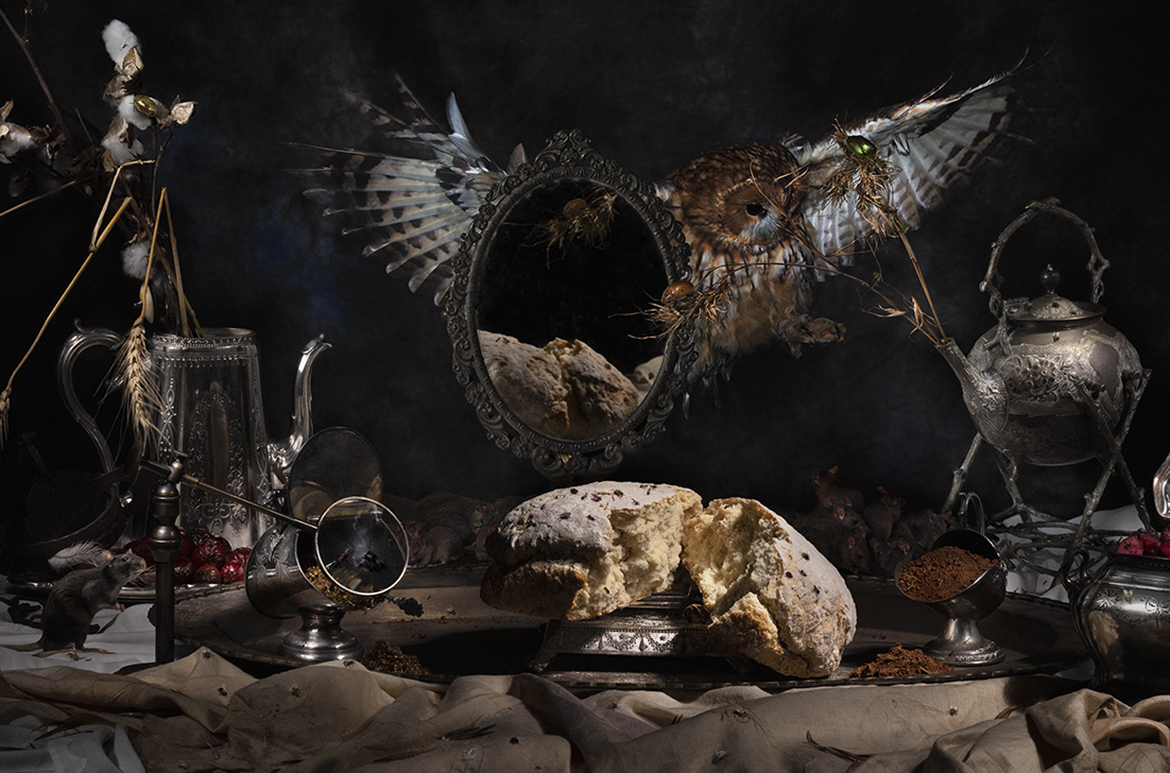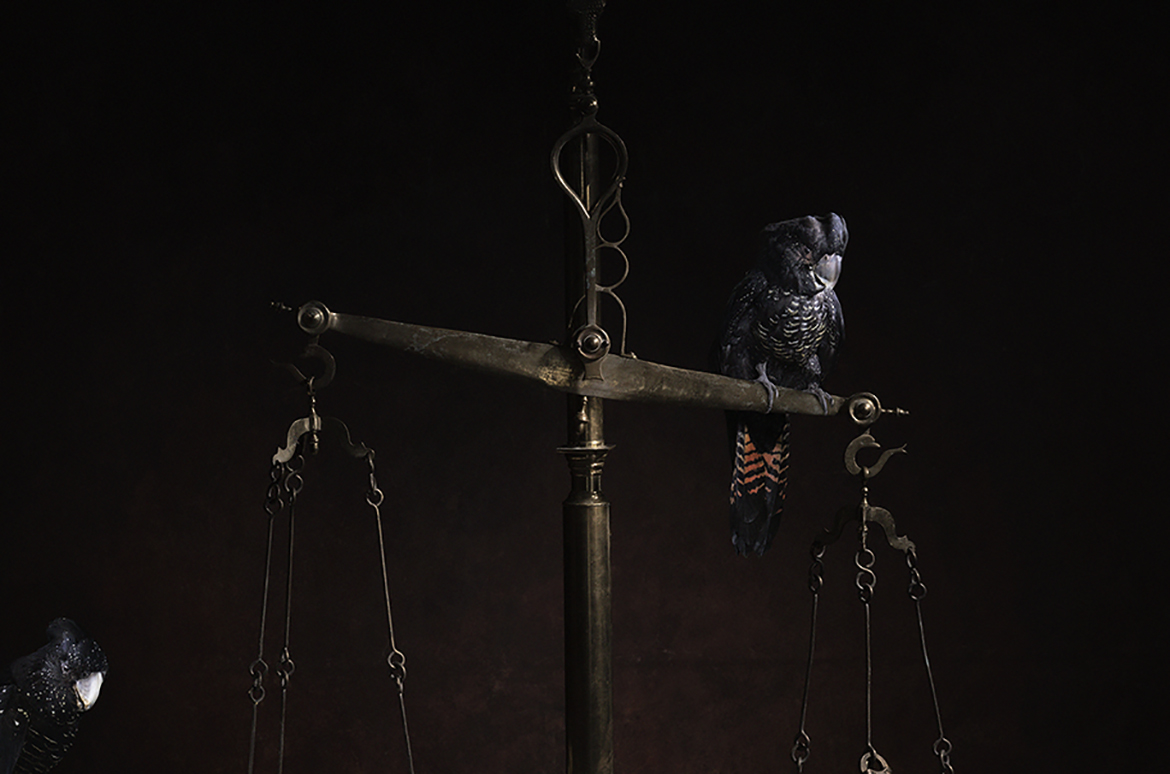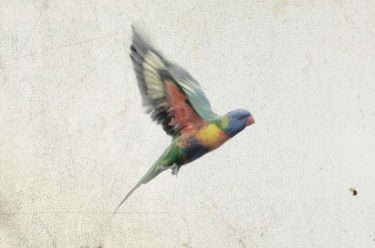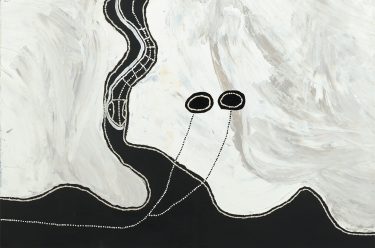Nature Morte (Agriculture) and Nature Morte (Blackbird), from Australian photographic artist Michael Cook’s ‘Natures Mortes’ series, draw on visual strategies affiliated with the still‑life genre — particularly the memento mori, a visual reminder of the inevitability of death — to highlight the devastating impact of colonisation from an Indigenous point of view.
Michael Cook ‘Nature Morte (Agriculture)’ 2021


In Nature Morte (Agriculture) (illustrated), Cook brings attention to the loss of Indigenous agricultural methods caused by the rapid introduction of unsustainable European farming practices. Shown visually by blades of broken kangaroo grass, shadowed by the looming figure of a predatory barn owl, Cook’s evocative tableaux symbolise the damage caused to traditional Aboriginal culture and the natural environment by European settlement.
Michael Cook ‘Nature Morte (Blackbird)’ 2021


The black cockatoos pictured in Nature Morte (Blackbird) (illustrated) symbolise the inhuman practices that were present in the Australian sugar industry in the late nineteenth and early twentieth centuries. The work’s title refers to ‘blackbirding’, a type of entrapment used to capture and transport South Sea Islander people to Australia as indentured labour to service the burgeoning cane fields and sugar industries. The wilted flowers mourn the cruelty of this practice, with the set of scales resembling a cross-like figure that marks the countless deaths of First Nations peoples.
‘Still Life Now’ considers the way artists draw on ideas of the still-life tradition to explore issues of consumerism, beauty, power, postcolonialism and gender politics / Gallery of Modern Art (GOMA) from 24 September 2022 until 19 February 2023.
Acknowledgment of Country
The Queensland Art Gallery | Gallery of Modern Art acknowledges the Traditional Owners of the land on which the Gallery stands in Brisbane. We pay respect to Aboriginal and Torres Strait Islander Elders past and present and, in the spirit of reconciliation, acknowledge the immense creative contribution First Australians make to the art and culture of this country.
It is customary in many Indigenous communities not to mention the name or reproduce photographs of the deceased. All such mentions and photographs on the QAGOMA Blog are with permission, however, care and discretion should be exercised.
#QAGOMA

